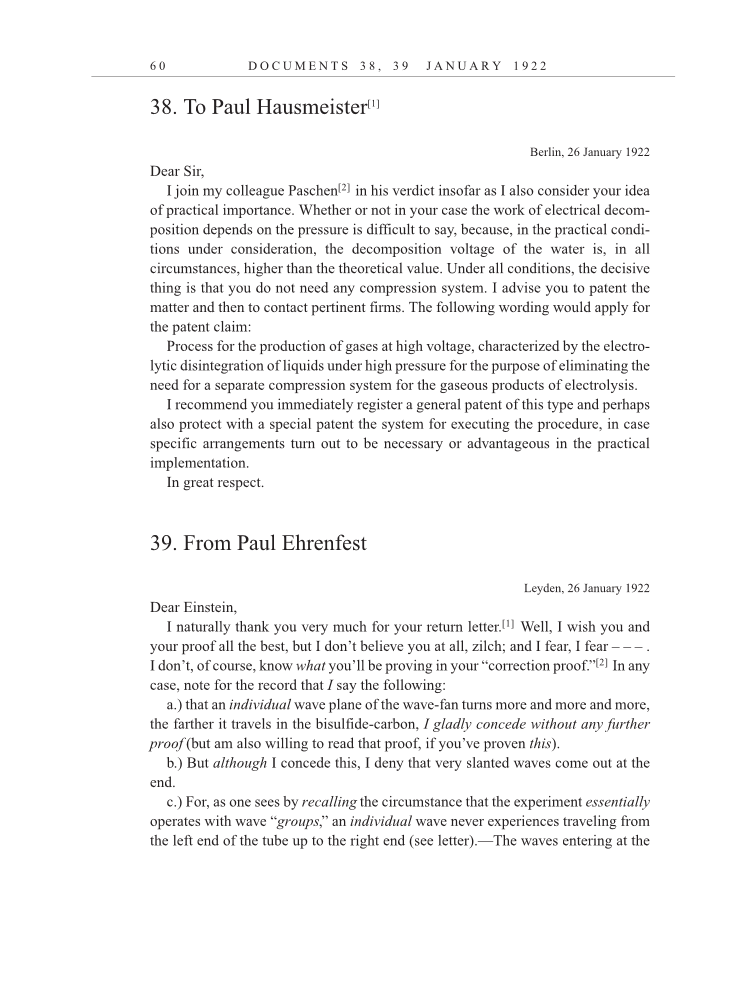6 0 D O C U M E N T S 3 8 , 3 9 J A N U A R Y 1 9 2 2 38. To Paul Hausmeister[1] Berlin, 26 January 1922 Dear Sir, I join my colleague Paschen[2] in his verdict insofar as I also consider your idea of practical importance. Whether or not in your case the work of electrical decom- position depends on the pressure is difficult to say, because, in the practical condi- tions under consideration, the decomposition voltage of the water is, in all circumstances, higher than the theoretical value. Under all conditions, the decisive thing is that you do not need any compression system. I advise you to patent the matter and then to contact pertinent firms. The following wording would apply for the patent claim: Process for the production of gases at high voltage, characterized by the electro- lytic disintegration of liquids under high pressure for the purpose of eliminating the need for a separate compression system for the gaseous products of electrolysis. I recommend you immediately register a general patent of this type and perhaps also protect with a special patent the system for executing the procedure, in case specific arrangements turn out to be necessary or advantageous in the practical implementation. In great respect. 39. From Paul Ehrenfest Leyden, 26 January 1922 Dear Einstein, I naturally thank you very much for your return letter.[1] Well, I wish you and your proof all the best, but I don’t believe you at all, zilch and I fear, I fear – – – . I don’t, of course, know what you’ll be proving in your “correction proof.”[2] In any case, note for the record that I say the following: a.) that an individual wave plane of the wave-fan turns more and more and more, the farther it travels in the bisulfide-carbon, I gladly concede without any further proof (but am also willing to read that proof, if you’ve proven this). b.) But although I concede this, I deny that very slanted waves come out at the end. c.) For, as one sees by recalling the circumstance that the experiment essentially operates with wave “groups,” an individual wave never experiences traveling from the left end of the tube up to the right end (see letter).—The waves entering at the
